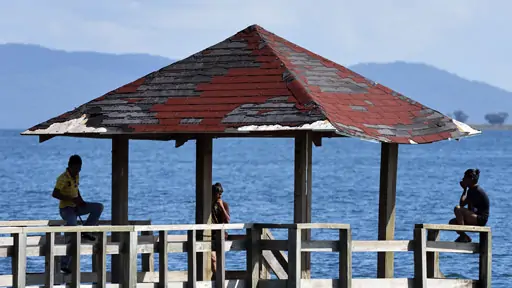Indigenous Calendar March, 2015: The Itza Maya Survive Spanish Conquest

Most people who travel to northern Guatemala spend a day or two on the island of Flores waiting to be taken by one of the many local tour operators to the near-by ancient Maya archaeological site, Tikal. It is an impressive experience to visit that site and most people leave the area immediately after their experience.
Some of them are no doubt tempted to spend more time in the area when they learn that the El Péten region is abundant in ancient Maya archaeological sites such as El Mirador and Yaxa. But when they learn that visiting those sites comes at a much greater cost in both quetzales and time, few succumb to their temptation.
At the cost of only a handful of quetzales and about thirty minutes by local bus lies the small Itza Maya town of San Jose. Riding that bus the traveler might be seated next to a descendant of the very people who built Tikal, El Mirador or Yaxa hundreds of years ago. But there is another compelling reason why the traveler who is interested in Maya history should go there: the Itza were the last of the Maya to be conquered by the Spanish.
I first went there in 2005 because my research had led me to a local Itza language revival program aimed at preserving that language. It has been recognized for a long time as being on the imminently endangered language list but back then the teachers and students that I interviewed in San Jose were confident that the program would succeed and that the Itza people there and in the surrounding communities would once again speak the language of their ancestors.
Returning in late 2013 I was disappointed to learn that the program had been abandoned. I was told that the main reason was that the young students had been eager to learn it but, with so few native speakers left, they simply didn't get enough opportunity to practice it. I immediately related to this from my own language learning experiences: once a competent speaker of French I have had so few opportunities to practice it in the last few years that I would now likely struggle to hold a basic conversation.
With my plan to spend a few hours doing follow-up research quashed, I decided to stay anyway for a while in San Jose on that day in 2013. As I wandered around I found myself remembering vividly my experiences from eight years earlier and recognizing everything I saw. But there was one new addition. This gazebo had been built jutting out into lake Péten. It was surely a coincidence afforded from my viewing angle that it appeared to rise above the surrounding hills like many of the area's ancient Maya temples and pyramids still do. Placing a telephoto lens on my camera I noticed these three local people sheltering from the midday sun. As they gazed over the lake I wondered whether they knew that their ancestors would have sheltered in the same area — not from the sun but from those who were about to cause the third stage of the decline of their people.
The Itza Maya are featured in our documentary, Ancient and Modern Mayan Peoples.
If you enjoyed reading this article, please consider supporting independent, advertising-free journalism by buying us a coffee to help us cover the cost of hosting our web site. Please click on the link or scan the QR code. Thanks!


